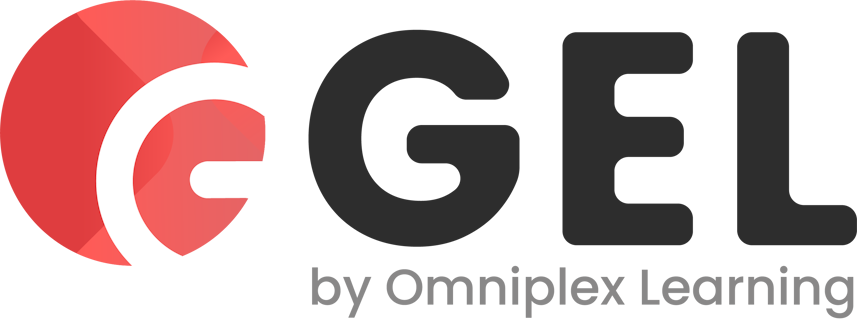Business Architecture (BA) has always had a place within Enterprise Architecture (EA) best practices. Each is used to create clear ‘architectures’ of organizations for the sake of assessing their structures, connections, key processes, and more. Not only can this help drive awareness and guide improvements, but it can also give stakeholders the perspective to understand how to reshape a business for the sake of meeting long term strategic goals.
Consider The Open Group Architecture Framework (TOGAF), one of the world’s most popular EA frameworks. Business Architecture is actually Phase B of TOGAF, meaning TOGAF enterprise architects will always take BA into account. However, The Open Group also recognized the depth of business architecture as its own subject. This led to the creation of the syllabus for TOGAF Business Architecture (BA).
TOGAF BA is a specialized business architecture framework for designing, creating, and updating business architectures. It supplies users with demonstrably effective methods, tools, and best practices that can be adapted to suit virtually any business, regardless of size, industry, or location.
TOGAF BA is highly relevant for TOGAF enterprise architects wishing to expand or specialize their knowledge, as well as business architects who want to understand TOGAF BA practices. Businesses will find that TOGAF BA can enhance organization-wide communication, efficiency, direction, and more. It can even create target business architectures to help decision-makers plan movement from one point to another.
Still, when it comes to stakeholders, we must consider just how tangibly valuable a specialization business architecture actually is. In other words, what are the biggest benefits to stress when selling TOGAF BA to your organization?
Business Analytics
Business architecture is a strategic process that requires a firm understanding of a business’ structure, processes, information flows, roles, and capabilities. Imagine a typical architect being brought in to improve the structure, modernity, and overall value of an existing structure: business architects work just as hard to evolve the different elements of their organizations.
Achieving this holistic level of awareness naturally requires nuanced analytical skills. The clarity TOGAF BA has to offer can help business architects highlight opportunities for improvement or realignment throughout an enterprise. It also gives them the terminology and skills required to communicate the benefits of doing so to stakeholders.
Planning and Reshaping Improvements
TOGAF certified business architects can do more than help highlight and advocate for potential improvements within a business architecture vision. They can also create and drive strategies for implementing these improvements, ensuring all key actors have a clear map from A to B.
This may sound like an advantage of enterprise architecture in general. However, it is important to remember the role that BA plays in EA. Taking your understanding of business architecture to another level will only enhance the results of any existing enterprise architecture initiatives in your organization.
As TOGAF Phase B states:
“A knowledge of the Business Architecture is a prerequisite for architecture work in any other domain (Data, Applications, Technology), and is therefore the first architecture activity that needs to be undertaken, if not catered for already in other organizational processes (enterprise planning, strategic business planning, business process re-engineering, etc.).”
Top-Tier Business Architecture Practices
While BA may be an inherent part of EA, TOGAF BA still stands out. It is important to remember that TOGAF and TOGAF BA are registered trademarks of The Open Group. This organization builds its frameworks on decades of experience, as well as first-hand expert knowledge on how EA is evolving.
This pedigree is certainly reflected in the quality of the framework itself. TOGAF BA goes into a far greater amount of detail than students can find in Phase B of TOGAF. Indeed, the value of TOGAF BA certification makes the subject an excellent point of focus for prospective architects, as well as experienced architects looking to perfect their understanding of TOGAF.
Enhanced Student Focus
While TOGAF BA does indeed offer numerous advantages as far as businesses and other organizations are concerned, studying the role of a TOGAF business architect can also grant significant benefits for individuals. TOGAF Business Architecture Level 1 can prepare a practitioner for additional responsibilities and even higher-paying roles as they gain experience. It can also greatly complement managers who wish to understand how to govern TOGAF BA practices within a team.
While these benefits may not sway stakeholders towards investing in TOGAF BA training, it is important to remember that they can lead to higher engagement from students. With more of a personal stake in passing the TOGAF BA certification exams, students will be more likely to produce higher pass rates.
Online training providers like Good e-Learning can take these benefits even further. It utilizes the ‘Go.Learn’ app to allow students to access courses even from mobile and tablet devices. Learners can log in anywhere, any time, making it easy for them to structure their training around other responsibilities. With both the drive to study and the access to do so easily, you will find your employees are capable of exceptional results.
Concepts and Tools Ready to be Applied
The TOGAF BA syllabus offers more than just confident theories. Rather, it constitutes a framework that fully equips business architects and BA teams with what they need to begin creating real business value.
One of the key products of the concepts and tools offered by TOGAF BA is clarity. This is guaranteed via:
-
Value Streams – These streams track any activities that create value. Together, they form tangible benefits for customers, clients, and stakeholders. Value-mapping is used to display activities clearly while also helping architects to communicate the reasons for prioritizing and enhancing them
-
Business Scenarios – These are used to identify business requirements, such as flaws that need to be solved. Business scenarios also highlight where targets appear, what desired outcomes are, how they create, empower, or endanger value, and so on. Several business scenarios will make up a typical business architecture
-
Business Models – These offer a top-level perspective of a business, including how it creates, delivers, and captures value. This helps to clarify the positions and interests of stakeholders
-
Business Capabilities – These describe how a business achieves its objectives. They typically include descriptions of clear processes and abilities
-
Information Mapping – This process is used to map what information different points of a business require in order to function. It describes the connections, making them easier to optimize. Information mapping can improve the processing, delivery, and consumption of information, driving collaboration, integration, and reporting across a business
Having a solid mastery of these elements will create clarity across your business in numerous ways, even enabling teams and departments to take charge of their own improvements.
It is worth remembering that these benefits can be enjoyed more quickly via internal training. This is simply because students will already be familiar with how your business works at ground level. It will also enable students to start applying what they learn in their own day to day activities.
Wide Range of Specialties
Business architects understand that a business creates and protects the creation of value in a number of ways. No business amounts to a single function, nor can customer-facing services function without significant support structures in place.
Rather than focusing only on major value-generators, business architects approach businesses with a granular technique. The elements they examine include:
-
The application of compliance initiatives
-
Planning out the creation of new divisions
-
Planning, developing, and releasing new products and services,
-
Integrating aspects of culture, processes, technology, and capabilities (even across a business)
TOGAF business architects are equipped to drive optimization and refinement across your business. They take a holistic approach that will generate benefits beyond business strategies, efficiency, and value generation.


